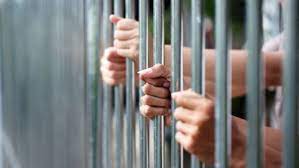
Prison Security Management: Ensuring Safety Behind Bars
Prison security management is a complex and critical aspect of the criminal justice system. Maintaining the safety of both inmates and correctional staff while preventing escapes and incidents requires a well-structured and adaptable approach. In this comprehensive article, we will delve into the multifaceted world of prison security management, exploring strategies, challenges, and the future of incarceration.
Table of Contents
- Introduction
- The Importance of Effective Prison Security
- Levels of Prison Security
- Correctional Facility Design and Security
- Inmate Classification and Management
- Surveillance and Monitoring
- Correctional Staff Training
- Innovations in Prison Security
- Managing Gangs and Cliques
- Challenges in Prison Security
- Rehabilitation and Reentry Programs
- Legal and Ethical Considerations
- Future Trends in Prison Security
- Conclusion
- FAQs
Introduction
Prison security management involves the design, implementation, and oversight of security measures within correctional facilities. It plays a pivotal role in ensuring the safety of both inmates and prison staff, as well as the security of the wider community.
The Importance of Effective Prison Security
Effective prison security is crucial for various reasons. It prevents escapes, reduces violence within facilities, and helps deter criminal activity inside and outside of prisons. Moreover, it supports the rehabilitation and reentry of inmates into society.
Levels of Prison Security
Prisons utilize different security levels, ranging from minimum to maximum security, based on the nature of the inmates and the crimes they have committed. Each level requires distinct security protocols.
Correctional Facility Design and Security
The physical design of correctional facilities plays a significant role in security management. Factors such as camera placement, access control, and facility layout impact security.
Inmate Classification and Management
Inmate classification is vital for determining housing, supervision, and program assignments. Proper classification ensures that inmates with similar risks and needs are housed together.
Surveillance and Monitoring
Advanced surveillance technologies, including CCTV cameras and electronic monitoring, aid in keeping a close watch on inmate activities and potential security threats.
Correctional Staff Training
Correctional officers undergo rigorous training to handle various situations, from inmate conflicts to emergencies.
Innovations in Prison Security
Technological advancements, such as biometric identification and predictive analytics, are being incorporated into prison security to enhance safety and efficiency.
Managing Gangs and Cliques
Gangs and cliques within prisons pose security challenges. Prison staff must implement strategies to identify and manage these groups effectively.
Challenges in Prison Security
Overcrowding, understaffing, contraband smuggling, and inmate healthcare are some of the significant challenges faced by correctional facilities in maintaining security.
Rehabilitation and Reentry Programs
Prison security is not only about confinement but also rehabilitation. Programs that address education, job skills, and mental health contribute to successful inmate reentry.
Legal and Ethical Considerations
Prison security measures must adhere to legal and ethical standards, including the protection of inmate rights and the prevention of abuse.
Future Trends in Prison Security
The future of prison security management involves more advanced technology, data-driven decision-making, and a continued focus on rehabilitation and reentry.
Conclusion
Prison security management is a multifaceted endeavor that requires constant adaptation and innovation. Balancing security with rehabilitation is the key to a more effective criminal justice system that safeguards society while offering inmates opportunities for positive change.
FAQs
1. What is the primary goal of prison security management?
The primary goal of prison security management is to ensure the safety of inmates and correctional staff, prevent escapes, and deter criminal activity within the facility.
2. How are inmates classified in correctional facilities?
Inmates are classified based on their risks and needs, ensuring that they are housed with others of similar profiles for security and program purposes.
3. What are some challenges in prison security management?
Challenges include overcrowding, contraband smuggling, and the need for healthcare services. These challenges require innovative solutions to maintain security.
4. What role does rehabilitation play in prison security?
Rehabilitation programs are essential in preparing inmates for successful reentry into society, ultimately contributing to long-term security.
5. What are the future trends in prison security management?
Future trends include the incorporation of advanced technology, data-driven decision-making, and a continued focus on rehabilitation and reentry programs.



